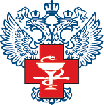 pirogov national medical surgical center
pirogov national medical surgical centernational center for researh and treatment of autoimmune diseases new jersey center for quality of life and health outcome research |
international symposium stem cell transplantation in multiple sclerosis: sharing the experience |
 |
 |
 |
 |
 |
 |
 |
 |
 |
 |
 |
 |
 |
 |
 |
| On the Evolution of High-Dose Immunosuppressive Therapy with Autologous Stem Cell Transplantation in Multiple Sclerosis |
|
International Symposium "Stem Cell Transplantation in Multiple Sclerosis", Key-Note Lectures Book, 2009, p. 28-33 A. Fassas High-dose immunosuppressive therapy with hemopoietic stem cell transplantation (HSCT) was introduced into the management of multiple sclerosis (MS) already in 1995. The method was based on the concept of an immunological "renewal" after (near)-complete eradication of the aberrant immune system responsible for the development of the disease. Experimental hemopoietic transplants in an animal model of MS, experimental autoimmune encephalomyelitis (EAE), performed in Israel and in the Netherlands, showed that the induction of profound and long-lasting immunosuppression followed by allogeneic or syngenenic or (pseudo)-autologous HSCT can actually have a beneficial impact on the course of EAE. At that time, there was a need for new effective treatments for MS, in particular for the rapidly progressing, therapy-resistant cases, as the results of the existing standard therapies, namely interferon-beta and glatiramer acetate, were rather moderate to poor and their effect on the progression of disability was only marginal. In order to eradicate the immune system and in view of the lack of a purely immunotoxic regimen, MS patients were proposed to be treated with high-dose chemotherapeutic agents (carmustin/etoposide/araC/melphalan or busulfan/cyclophosphamide) or total body irradiation (TBI) in the way patients with lymphoma or leukemia are conditioned for HSCT. To rescue the patient, autologous grafts were used, purged of T cells or CD34+ cell-selected. These were harvested from peripheral blood stem cells mobilized by cyclophosphamide plus G-CSF prior to HSCT. Intravenous anti-lymphocyte globulins (ALG, ATG) were also administered in the peri-transplant period in order to further eradicate any auto-reactive lymphocytes surviving the conditioning regimen or reinfused with the autologous graft. The "debulking" of autoreactive clones followed by reconstitution of the immune system in the presence of auto-antigens was speculated to bring about, apart from the abrogation of inflammation, qualitative changes as well, which might induce a degree of selftolerance. Since 1995, a number of centers in the European Union, Russia, Israel, China, USA, Canada and Latin America have reported their experience in treating progressing, mainly advanced-stage and standard-therapy resistant MS with high-dose immunosuppression and HSCT. It is estimated that more than 400 patients have so far been treated worldwide and favorable results have been reported with certain spectacular and long-lasting beneficial outcomes. However, after fourteen years of experience, the number of centers performing HSCT for MS still remains limited and few patients are referred for this kind treatment, which has not yet been accepted as an established therapy for aggressive MS because the neurological communities have constantly kept a skeptical attitude towards it. The reason lies mainly in the toxic complications of HSCT, especially in the risk of mortality associated with the procedure, which may be elevated in not properly selected patients. This attitude has, unfortunately, prevented the accomplishment of comparative studies that were initiated in Europe (ASTIMS) and USA (MIST, HALTMS) some years ago and have not yet been finalized. In the meantime, other therapies emerged that were claimed to give good results in MS, e.g. mitoxantrone, alemtuzumab, rituximab and natalizumab. HSCT has been shown to be a most powerful immunosuppressive and anti-inflammatory treatment. Since 2000, all communications have invariably reported a dramatic, almost 100%, reduction in, or disappearance of, disease activity (inflammation) on magnetic resonance imaging (MRI) which is retained with time and has not been observed as an outcome of any other MS treatment. Also, brain atrophy which seems to continue after HSCT as a result of oedema resolution slows down after the 2nd post-HSCT year. Consequently, patients with a lot of inflammation in the CNS experience substantial improvements of their disability status. On the other hand, patients with long-standing disease and those with primary progressive MS, i.e. cases in which the neurodegenerative component of the disease prevails, may not respond to HSCT. This has been detected clinically and also in histopathological examinations of autopsy material, which show ongoing demyelination and axonal damage despite marked suppression of inflammation. With regard to clinical results of HSCT, it must first be noted that the great majority of the patient series treated worldwide had advanced disease with median EDSS scores of 6 to 6.5 while about 20% of the patients had primary progressive MS. All patients had evidence of disease progression over the twelve months preceding HSCT and/or gadolinium-enhancing lesions in MRI. After HSCT, improvement of disability scores by 1 to 4 steps was observed with a great reduction in the yearly relapse rate and a probability of disease progression-free survival (PFS) of 60-80% at three years. At 10 years post HSCT, PFS was around 65% for secondary and 40% for primary progressive MS. Moreover, the patients' quality of life and the physical and mental health have also been reported to improve. The most dramatic effect, however, was seen in the so-called "malignant" cases of MS which have a devastating course unresponsive to any standard therapy. In such cases, HSCT has been shown to be life-saving with meaningful clinical improvement and long-standing disease stabilization. From the immunological point of view, the effects of HSCT, especially the long-term ones on disease stabilization or on reduction in activity, do not seem to derive only from the immunosuppressive effect of the conditioning regimen, i.e. the "debulking" of autoreactive clones, because MBP-recognizing T cells usually reappear within a year after HSCT. Immunological studies have shown that the speculated immunological remodulation can actually become a fact after HSCT. Expansion of nave CD4+ cells of thymic origin, decrease of memory T cells, reconstitution of broad clonal diversity and renewal of clonal specificities have been described to occur after HSCT using high-intensity conditioning regimens (e.g. busulfan 16mg/kg.b.wt. or TBI). These changes may possibly create tolerance or tip the immunological balance towards suppression of autoimmunity and explain the long-standing beneficial effects of HSCT. Recently, there has been a tendency to use "light" conditioning regimens, e.g. cyclophosphamide 200mg/kg.b.wt. plus alemtuzumab or ATG in order to diminish the procedure-related mortality risk. Low-intensity conditioning regimens are, too, capable of inducing immune changes, like the renewal of the balance between CD4+25+FoxP3 regulatory and other T cells or like the deviation of a proinflammatory phenotype of autoimmune cells to a tolerant one. There seems to be a difference in the kind of immune reconstitution brought about by the two types of conditioning, high and low, and we still do not know whether this difference might have the same or a different (better or worse) impact on the clinical outcome. It has been reported, however, that, although "light" conditioning regimens do have less toxicity, they are also associated with more autoimmune relapse after HSCT, compared to "strong" regimens. The regimen cyclophosphamide plus ATG is less toxic than others but does not appear to have the same good impact on MRI compared to the intermediate-intensity BEAM (carmustine/etoposide/araC/melphalan). The number of relapses after HSCT with cyclophosphamide plus alemtuzumab or ATG appears somewhat elevated and it is still too early to conclude on the long-term effects on disease progression. HSCT is a toxic treatment with a variety of complications depending on the intensity of the conditioning regimen. Although a patient may undergo HSCT without any problems, it not unusual for infections, organ damage, and transient neurological worsening to develop during the early post-transplant period. Secondary autoimmune phenomena may also appear late after HSCT. In the two EBMT reports of 2002 and 2006, the procedure-related mortality was 6% in 85 cases and 5.3% in 185 cases, respectively. However, the mortality has dropped considerably from 7.3% in transplants before the year 2000 to 1.3% after the year 2000. This is the result of better patient selection, reserving HSCT for younger, ambulatory, not too-disabled patients, and avoiding the use of too "strong" conditioning regimens and too intensive, i.e. ex-vivo plus in-vivo, lymphocyte depletion. In summary, the analyses of the EBMT registry cases have shown that HSCT is active in the inflammatory phases of MS and is capable of slowing down the progression of the disease in relapsing/remitting cases and in patients that have recently entered the secondary progressive phase. Younger patients with low disability scores are more likely to benefit from this therapy. HSCT can be life-saving in desperate cases of very aggressive, rapidly progressing, and refractory to any other therapy, disease. HSCT is not curative, but it may offer prolonged periods of clinical disease stabilization or may change an aggressive disease course. It is not a therapy for the general population of MS patients, as the benefit does not justify the morbidity and mortality risks in cases of already stable disease, in primary progressive or long-standing secondary progressive MS, in cases without gadolinium-positive (inflammatory) lesions on MRI, and in wheelchair-bound patients (EDSS score 7) with low performance status and medical co-morbidities. In contrast, the best candidates, in whom the benefit of HSCT outweighs the risks, are young (below 40 years of age) patients who are still ambulatory, have active and rapidly progressing disease with inflammatory lesions in the CNS, and are in relapsing/remitting or recent secondary progressive phase without much disability. If such MS patients have no accompanying medical co-morbidities precluding transplantation, they may undergo HSCT with a practically zero mortality risk and agood outlook for clinical improvement and/or long disease stability. It is well-known that MS is a very difficult disease in which to show the efficacy of a therapy. Despite the very interesting outcomes of HSCT in treatment of MS, it is only in comparative trials that its superiority over other therapies can be demonstrated. Therefore, it is absolutely necessary to complete the running randomized studies comparing HSCT with mitoxantrone (ASTIMS) or other standard therapies. Unless such trials yield their final results, HSCT will never be approved as an established therapy for MS patients who may so miss the opportunity of receiving an active, powerful immunosuppressive and immunomodulating treatment having a long-term beneficial impact on the course of the disease. |
|
© KMart |
(last update) 28/10/2009 |